Abstract
capR (lon) mutants of Escherichia coli K-12 are mucoid and sensitive to ultraviolet (UV) and X-ray radiation as well as to nitrofurantoin. The mutants form filaments after exposure to these agents. capR mutants are also conditionally lethal since they die when plated on complex medium even without UV treatment; this phenomenon is designated "complex medium-induced killing". Furthermore, capR mutants are poorly lysogenized by bacteriophage lambda. Second-site revertants were isolated by plating on media containing nitrofurantoin. All 17 of the independent revertants studied were still mucoid but resistant to UV radiation. Sixteen of the 17 revertants contained a mutation, sulA, that cotransduced with pyrD (21 min). A second locus, sulB, was also found that cotransduced with leu (2 min). Studies with partial diploids (F'pyrD+ sulA+/pyrD36 sulA17 capR9 (lon) demonstrated that sulA+ is dominant to sulA; thus the indicated partial diploid is UV sensitive, whereas the haploid parent is UV resistant. Furthermore, two other phenotypic traits of capR (lon) mutants were reversed by the sul mutation:complex medium-induced killing and the inability of lambda phage to efficiently lysogenize capR strains. On the basis of these and other results, the following model is suggested to explain capR (lon) and sul gene interactions. capR (lon) is a regulator gene for the structural genes sulA+ and sulB+. Depression of both sul operons results in UV sensitivity and decreased ability of lambda to lysogenize, whereas inactivation of either sul+ protein by mutation to sul prevents these phenomena.
Full text
PDF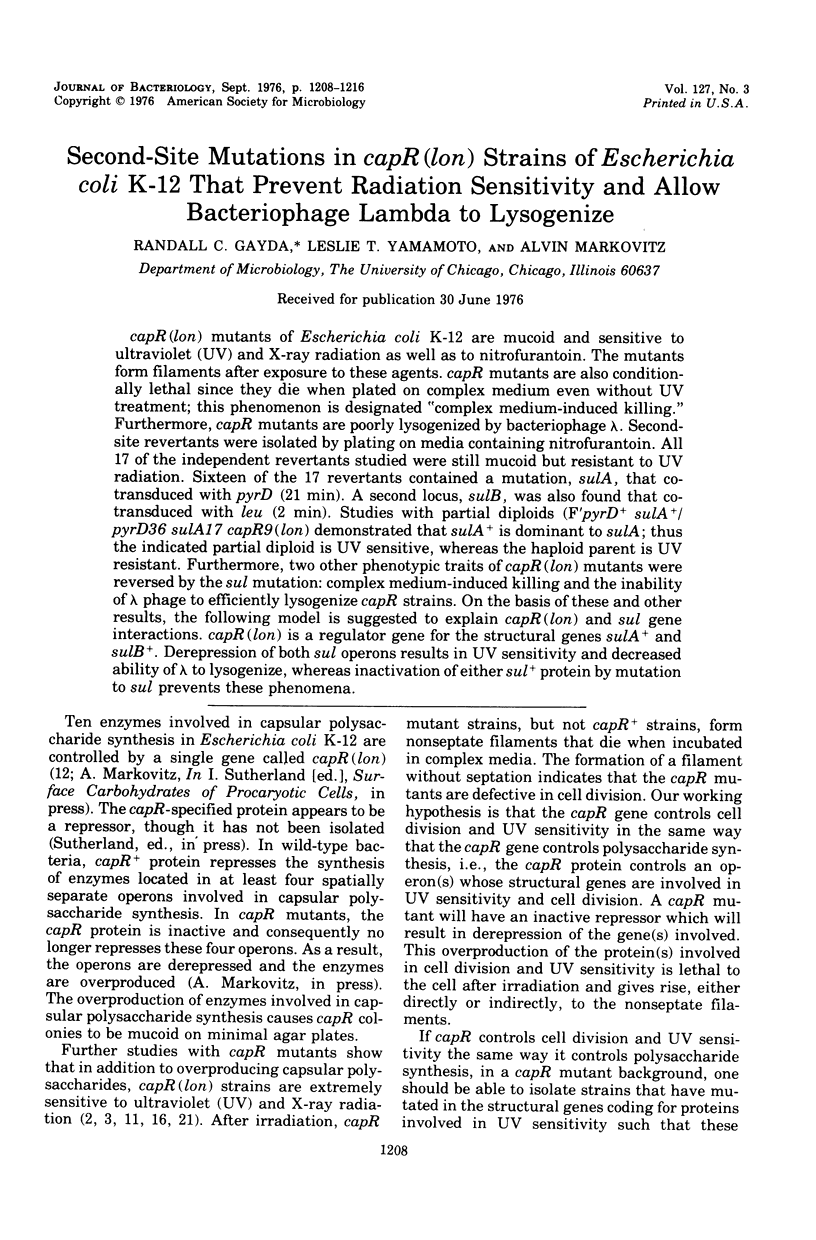
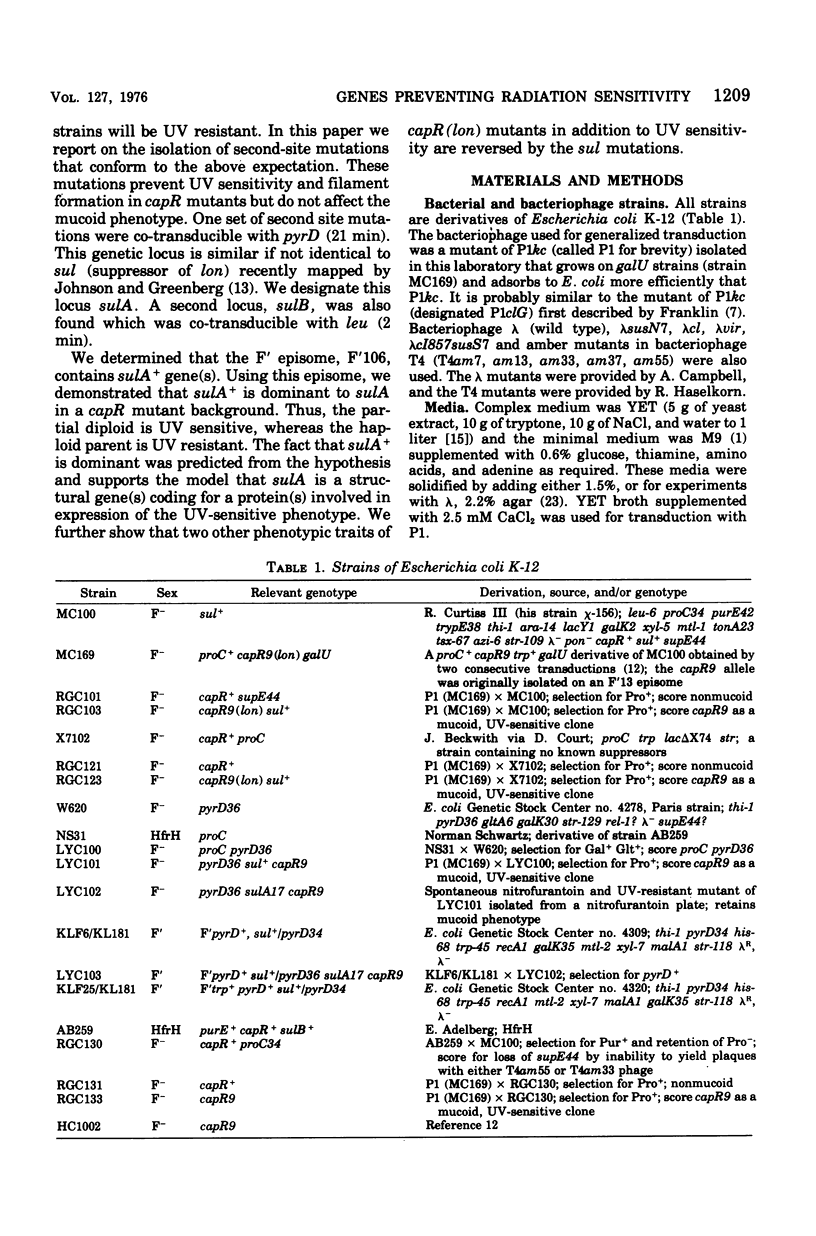
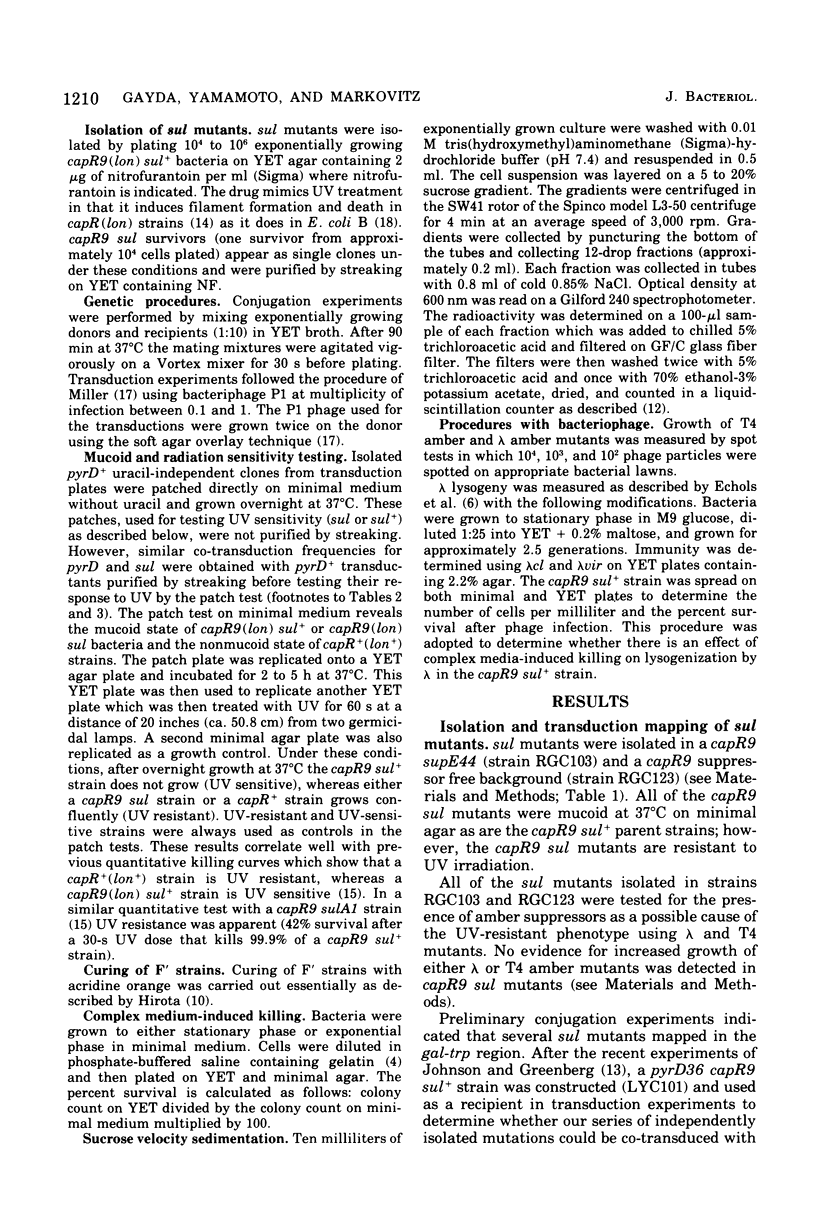
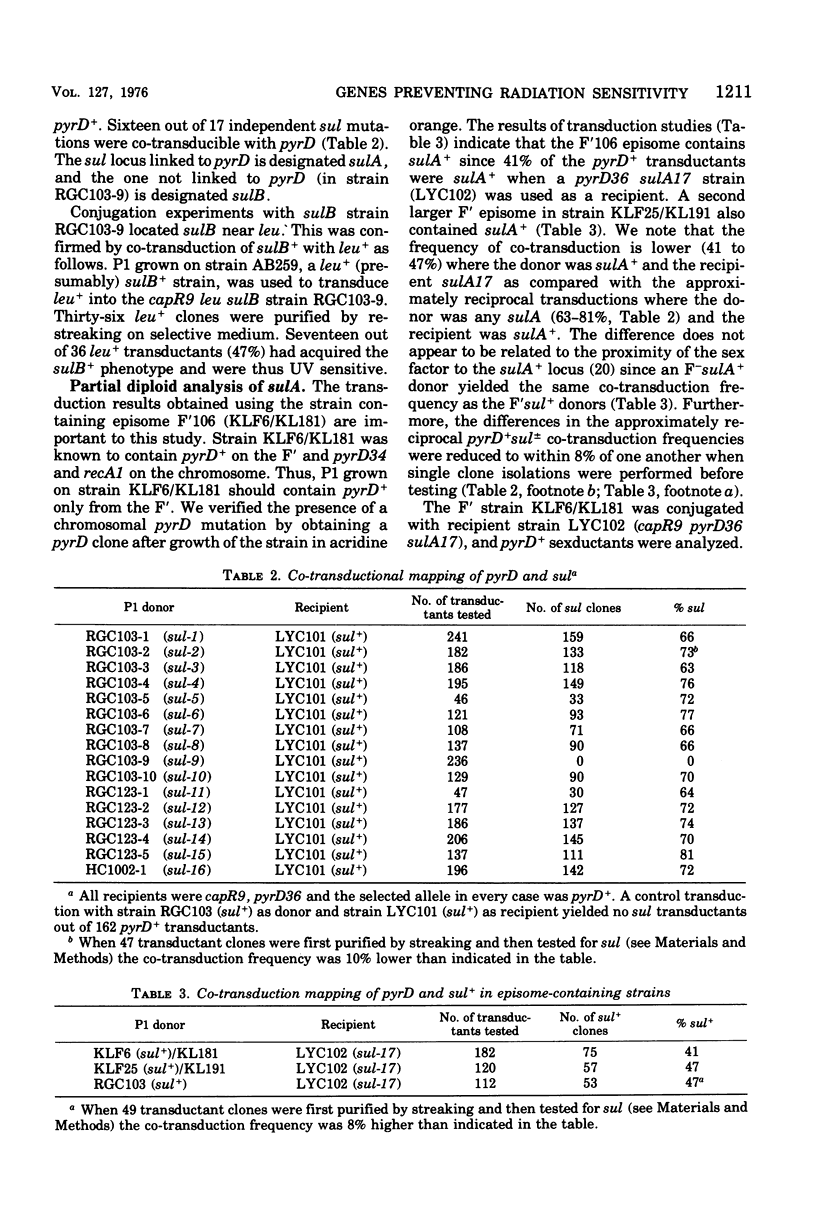
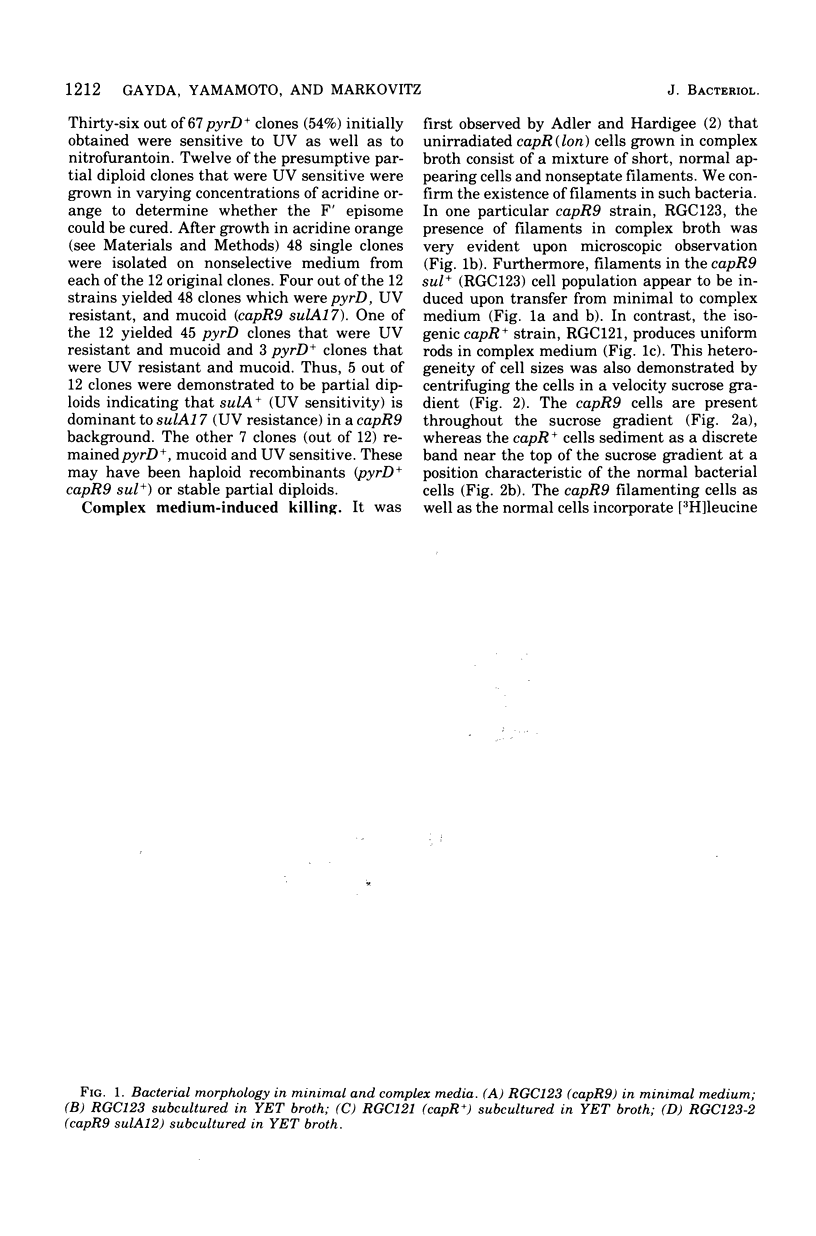
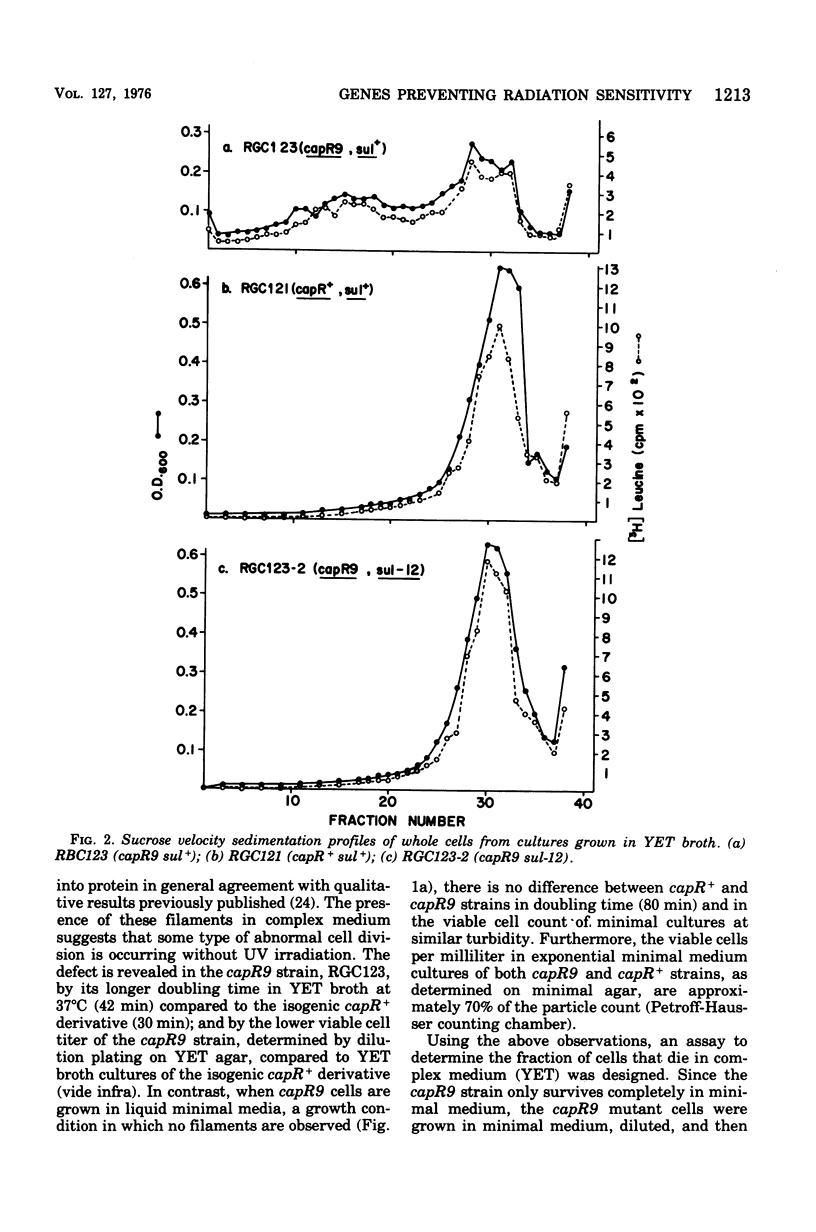
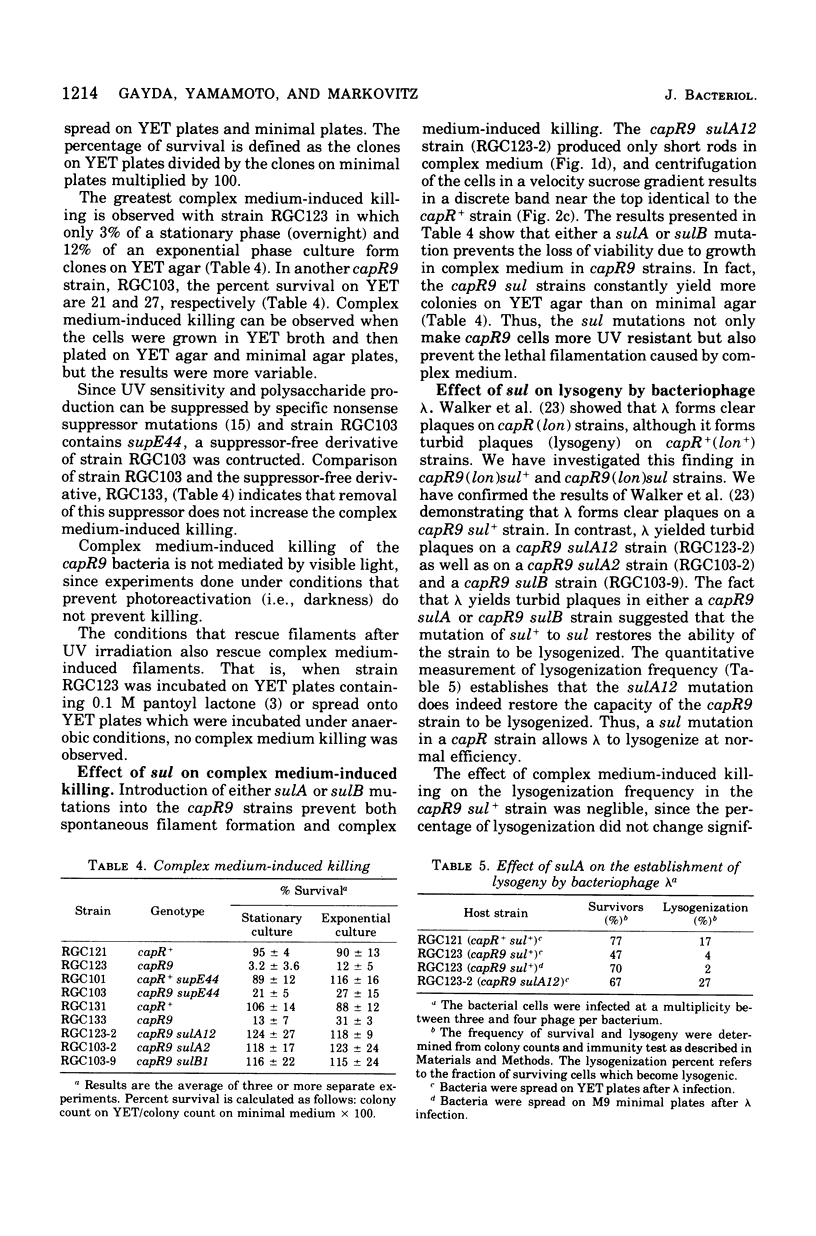
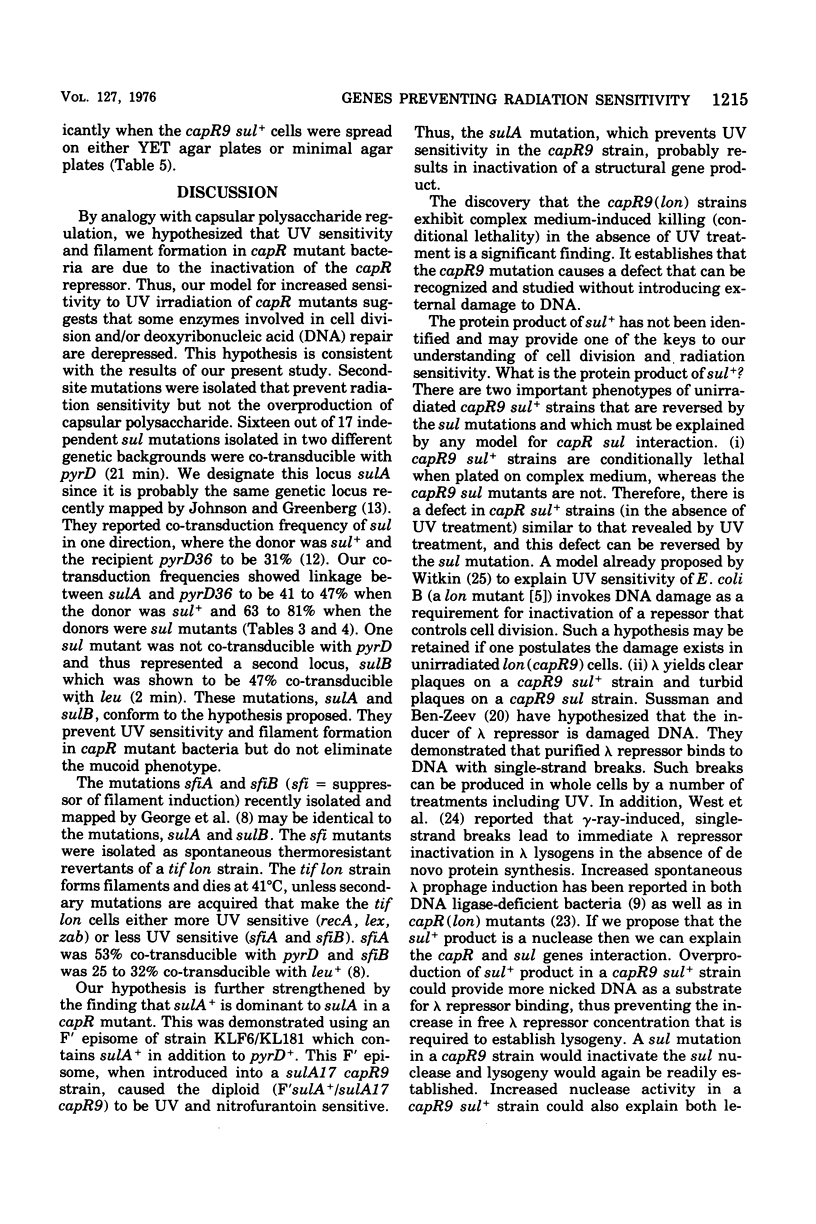
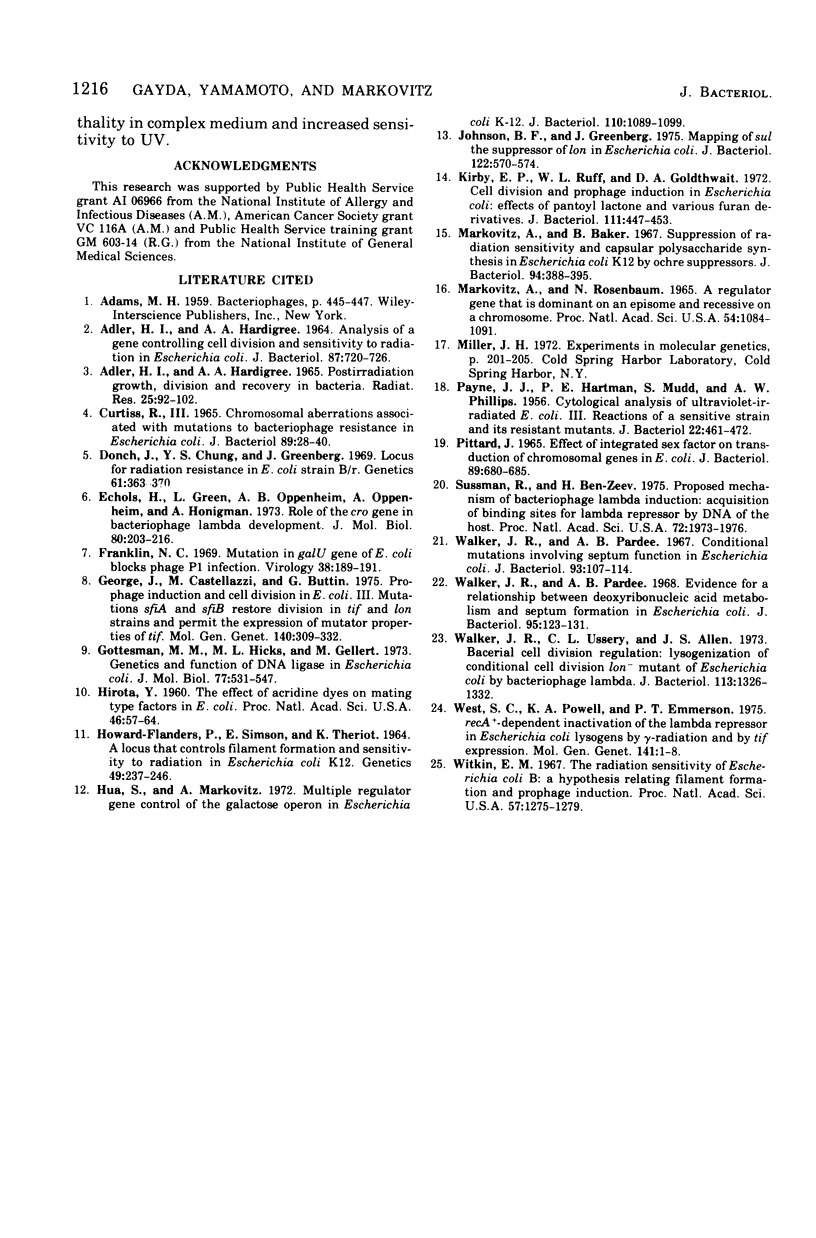
Images in this article
Selected References
These references are in PubMed. This may not be the complete list of references from this article.
- ADLER H. I., HARDIGREE A. A. ANALYSIS OF A GENE CONTROLLING CELL DIVISION AND SENSITIVITY TO RADIATION IN ESCHERICHIA COLI. J Bacteriol. 1964 Mar;87:720–726. doi: 10.1128/jb.87.3.720-726.1964. [DOI] [PMC free article] [PubMed] [Google Scholar]
- ADLER H. I., HARDIGREE A. A. POSTIRRADIATION GROWTH, DIVISION, AND RECOVERY IN BACTERIA. Radiat Res. 1965 May;25:92–102. [PubMed] [Google Scholar]
- CURTIS S. R., 3rd CHROMOSOMAL ABERRATIONS ASSOCIATED WITH MUTATIONS TO BACTERIOPHAGE RESISTANCE IN ESCHERICHIA COLI. J Bacteriol. 1965 Jan;89:28–40. doi: 10.1128/jb.89.1.28-40.1965. [DOI] [PMC free article] [PubMed] [Google Scholar]
- Donch J., Chung Y. S., Greenberg J. Locus for radiation resistance in Escherichia coli strain B-r. Genetics. 1969 Feb;61(2):363–370. doi: 10.1093/genetics/61.2.363. [DOI] [PMC free article] [PubMed] [Google Scholar]
- Echols H., Green L., Oppenheim A. B., Oppenheim A., Honigman A. Role of the cro gene in bacteriophage lambda development. J Mol Biol. 1973 Oct 25;80(2):203–216. doi: 10.1016/0022-2836(73)90167-8. [DOI] [PubMed] [Google Scholar]
- Franklin N. C. Mutation in gal U gene of E. coli blocks phage P1 infection. Virology. 1969 May;38(1):189–191. doi: 10.1016/0042-6822(69)90144-5. [DOI] [PubMed] [Google Scholar]
- George J., Castellazzi M., Buttin G. Prophage induction and cell division in E. coli. III. Mutations sfiA and sfiB restore division in tif and lon strains and permit the expression of mutator properties of tif. Mol Gen Genet. 1975 Oct 22;140(4):309–332. [PubMed] [Google Scholar]
- Gottesman M. M., Hicks M. L., Gellert M. Genetics and function of DNA ligase in Escherichia coli. J Mol Biol. 1973 Jul 15;77(4):531–547. doi: 10.1016/0022-2836(73)90221-0. [DOI] [PubMed] [Google Scholar]
- HARTMAN P. E., MUDD S., PAYNE J. I., PHILLIPS A. W. Cytological analysis of ultraviolet-irradiated Escherichia coli. III. Reactions of a sensitive strain and its resistant mutants. J Bacteriol. 1956 Oct;72(4):461–472. doi: 10.1128/jb.72.4.461-472.1956. [DOI] [PMC free article] [PubMed] [Google Scholar]
- HOWARD-FLANDERS P., SIMSON E., THERIOT L. A LOCUS THAT CONTROLS FILAMENT FORMATION AND SENSITIVITY TO RADIATION IN ESCHERICHIA COLI K-12. Genetics. 1964 Feb;49:237–246. doi: 10.1093/genetics/49.2.237. [DOI] [PMC free article] [PubMed] [Google Scholar]
- Hirota Y. THE EFFECT OF ACRIDINE DYES ON MATING TYPE FACTORS IN ESCHERICHIA COLI. Proc Natl Acad Sci U S A. 1960 Jan;46(1):57–64. doi: 10.1073/pnas.46.1.57. [DOI] [PMC free article] [PubMed] [Google Scholar]
- Hua S. S., Markovitz A. Multiple regulator gene control of the galactose operon in Escherichia coli K-12. J Bacteriol. 1972 Jun;110(3):1089–1099. doi: 10.1128/jb.110.3.1089-1099.1972. [DOI] [PMC free article] [PubMed] [Google Scholar]
- Johnson B. F., Greenberg J. Mapping of sul, the suppressor of lon in Escherichia coli. J Bacteriol. 1975 May;122(2):570–574. doi: 10.1128/jb.122.2.570-574.1975. [DOI] [PMC free article] [PubMed] [Google Scholar]
- Kirby E. P., Ruff W. L., Goldthwait D. A. Cell division and prophage induction in Escherichia coli: effects of pantoyl lactone and various furan derivatives. J Bacteriol. 1972 Aug;111(2):447–453. doi: 10.1128/jb.111.2.447-453.1972. [DOI] [PMC free article] [PubMed] [Google Scholar]
- Markovitz A., Baker B. Suppression of radiation sensitivity and capsular polysaccharide synthesis in Escherichia coli K-12 by ochre suppressors. J Bacteriol. 1967 Aug;94(2):388–395. doi: 10.1128/jb.94.2.388-395.1967. [DOI] [PMC free article] [PubMed] [Google Scholar]
- Markovitz A., Rosenbaum N. A regulator gene that is dominant on an episome and recessive on a chromosome. Proc Natl Acad Sci U S A. 1965 Oct;54(4):1084–1091. doi: 10.1073/pnas.54.4.1084. [DOI] [PMC free article] [PubMed] [Google Scholar]
- PITTARD J. EFFECT OF INTEGRATED SEX FACTOR ON TRANSDUCTION OF CHROMOSOMAL GENES IN ESCHERICHIA COLI. J Bacteriol. 1965 Mar;89:680–686. doi: 10.1128/jb.89.3.680-686.1965. [DOI] [PMC free article] [PubMed] [Google Scholar]
- Sussman R., Zeev H. B. Proposed mechanism of bacteriophage lambda induction: acquisition of binding sites for lambda repressor by DNA of the host. Proc Natl Acad Sci U S A. 1975 May;72(5):1973–1976. doi: 10.1073/pnas.72.5.1973. [DOI] [PMC free article] [PubMed] [Google Scholar]
- Walker J. R., Pardee A. B. Conditional mutations involving septum formation in Escherichia coli. J Bacteriol. 1967 Jan;93(1):107–114. doi: 10.1128/jb.93.1.107-114.1967. [DOI] [PMC free article] [PubMed] [Google Scholar]
- Walker J. R., Pardee A. B. Evidence for a relationship between deoxyribonucleic acid metabolism and septum formation in Escherichia coli. J Bacteriol. 1968 Jan;95(1):123–131. doi: 10.1128/jb.95.1.123-131.1968. [DOI] [PMC free article] [PubMed] [Google Scholar]
- Walker J. R., Ussery C. L., Allen J. S. Bacterial cell division regulation: lysogenization of conditional cell division lon - mutants of Escherichia coli by bacteriophage. J Bacteriol. 1973 Mar;113(3):1326–1332. doi: 10.1128/jb.113.3.1326-1332.1973. [DOI] [PMC free article] [PubMed] [Google Scholar]
- Witkin E. M. The radiation sensitivity of Escherichia coli B: a hypothesis relating filament formation and prophage induction. Proc Natl Acad Sci U S A. 1967 May;57(5):1275–1279. doi: 10.1073/pnas.57.5.1275. [DOI] [PMC free article] [PubMed] [Google Scholar]



